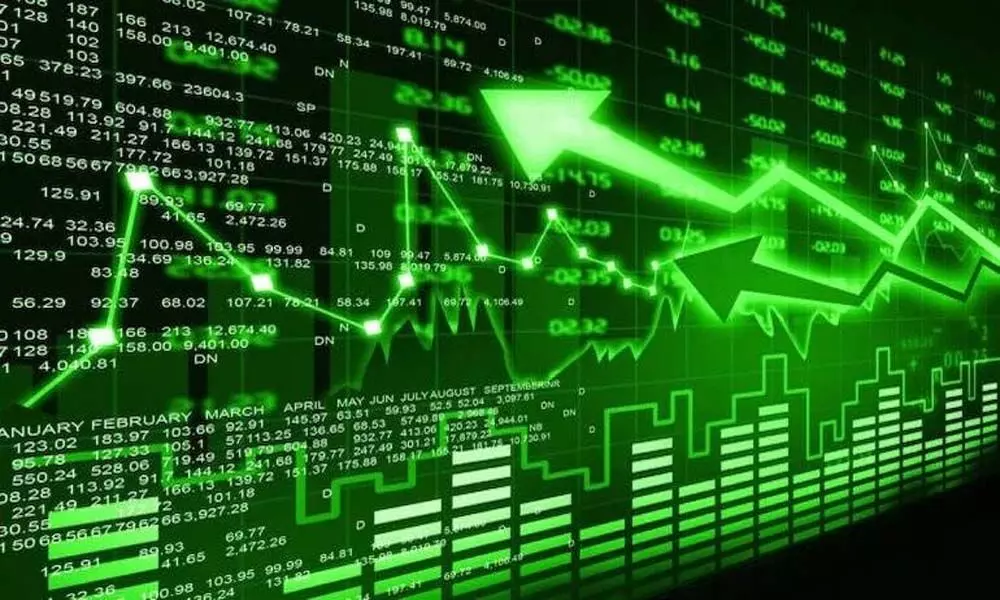Is retail investors' tilt to stock mkts transient?
Lower returns in other saving avenues propelling individuals to bourses
image for illustrative purpose

An ever-rising retail participation in stock market shows a long-term behavioural change, says a study by SBI economists. The number of individual investors in the market has increased by a whopping 142 lakh in FY21, with 122.5 lakh new accounts at CDSL and 19.7 lakh in NSDL.
Furthermore, another 44.7 lakh retail investor accounts have been added during the two months of this fiscal. Also, the share of individual investors in total turnover on stock exchange has risen to 45.41 per cent from 39.41 per cent in March 2020, according to the NSE data.
Within retail, maximum allocation has been to financials, followed by consumer staples, energy and IT. Globally, there has been significant increase in the market capitalisation in stock markets in the last one year. However, in India it has been higher than other major countries, says Ecowrap, the in-house research journal of SBI.
The market capitalisation of Sensex has increased by 1.8 times its value one year ago. However, sector-wise 1-year returns in Indian stock markets indicates that IT and materials have performed better. This clearly indicates the movement in Indian stock markets is increasingly being interlinked with a supposed infrastructure power play in coming days! There is also a renewed interest in healthcare stocks and of course financial stocks with stories of Indian financial ecosystem being effectively acting as a conduit of large liquidity finding investment avenues.Lower returns in other saving avenues
propelling individuals to bourses
"Lower rate in other saving avenues amidst the low interest rate regime has led to greater interest by individuals in the stock market. Another reason could be the significant increase in global liquidity," says Dr Soumya Kanti Ghosh, SBI group's chief economic advisor.
Additionally, the pandemic which has resulted in people spending more time in their homes might also be another reason for individuals' tilt towards the stock market trading. However, it is yet to be seen if this increasing retail participation is transitory or the beginning of long-term behavioural change? Additionally, the rise in stock market without significant development in real economy may raise issue of financial stability which as per our financial stability index shows modest improvement in Apr '21, but lower than the peak witnessed in Dec '20. However, it is expected to have declined in May '21, he added.
Increasing retail participation if it becomes the norm could also enable a larger resource pool for financing India's infrastructural requirements. For example, the share of savings in shares and debentures to total household financial savings at 3.4 per cent in FY20 is likely to increase in FY21 to 4.8 per cent-5.0 per cent of total HH financial saving, (or 0.7 per cent of GDP from 0.4 per cent of GDP in FY20), which is still much lower than 36.5 per cent in the US, indicating the significant upside to household participation in equity investment.
On a separate note, if we consider this to increase further to 1 per cent of GDP and further even if half of this can be tapped and channelised into infrastructure spending, then it can cover around 24 per cent of the IBER (other than Railways) of the Government in FY22. Other option for financing infrastructure that is also being explored is the InvIT (Infrastructure Investment Trusts). Government owned Financial Institutions like PFC and REC are setting up InvITs and providing equity capital for new projects. These are all positive developments in the long term financing story of India!
Of the household savings, a significant portion, around 41 per cent is in financial savings. With the onset of pandemic and subsequent lockdown, household financial savings had initially showed a significant jump in Q1 FY21, and then a sharp moderation in Q2 FY21. However, the data shows that currency in circulation again increased in Q3 and Q4 FY21. Furthermore, the markets have progressively improved with Sensex increasing from 28,265 at the beginning of Apr '20 to above 52,000 now. This has led to increased investment in stocks and mutual funds in H2 FY21 and this higher retail participation in stock markets may become more of a self-fulfilling prophecy.

